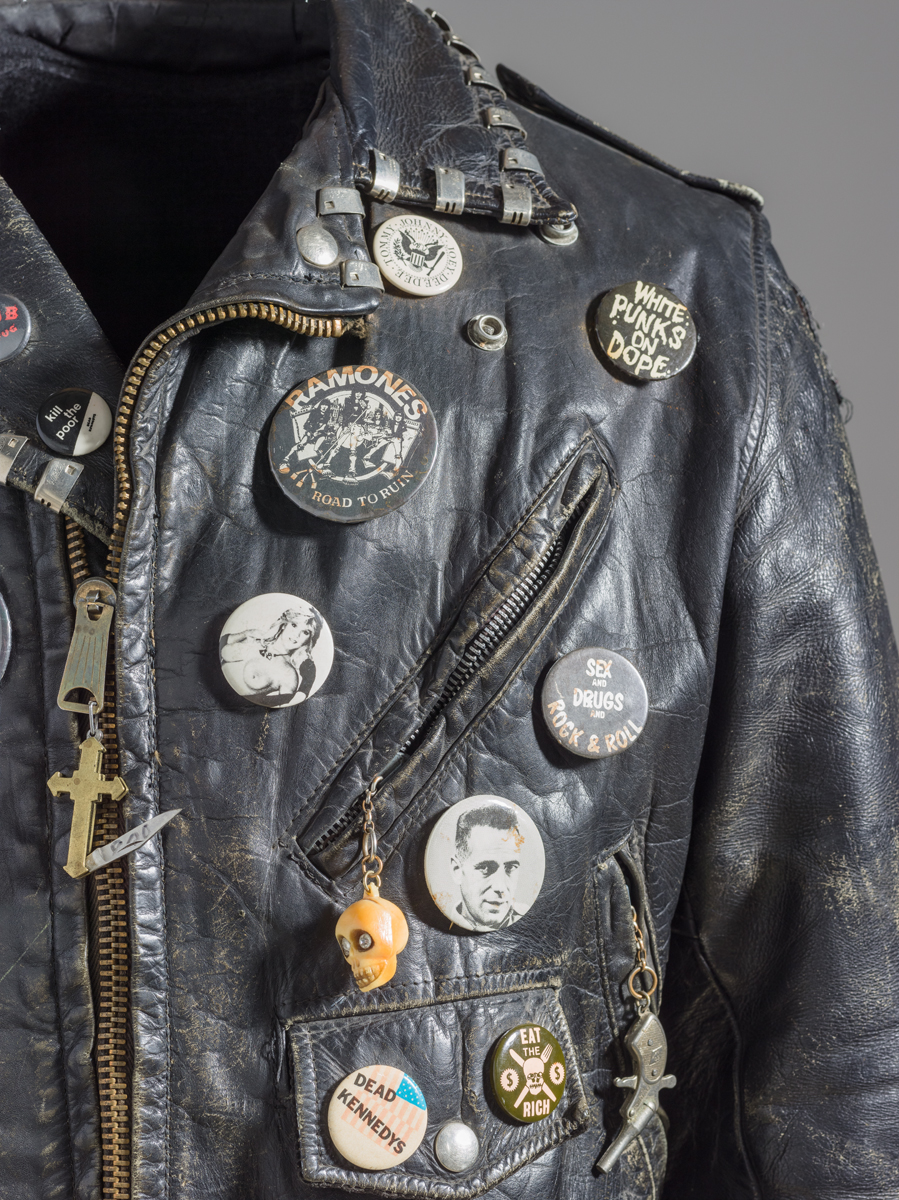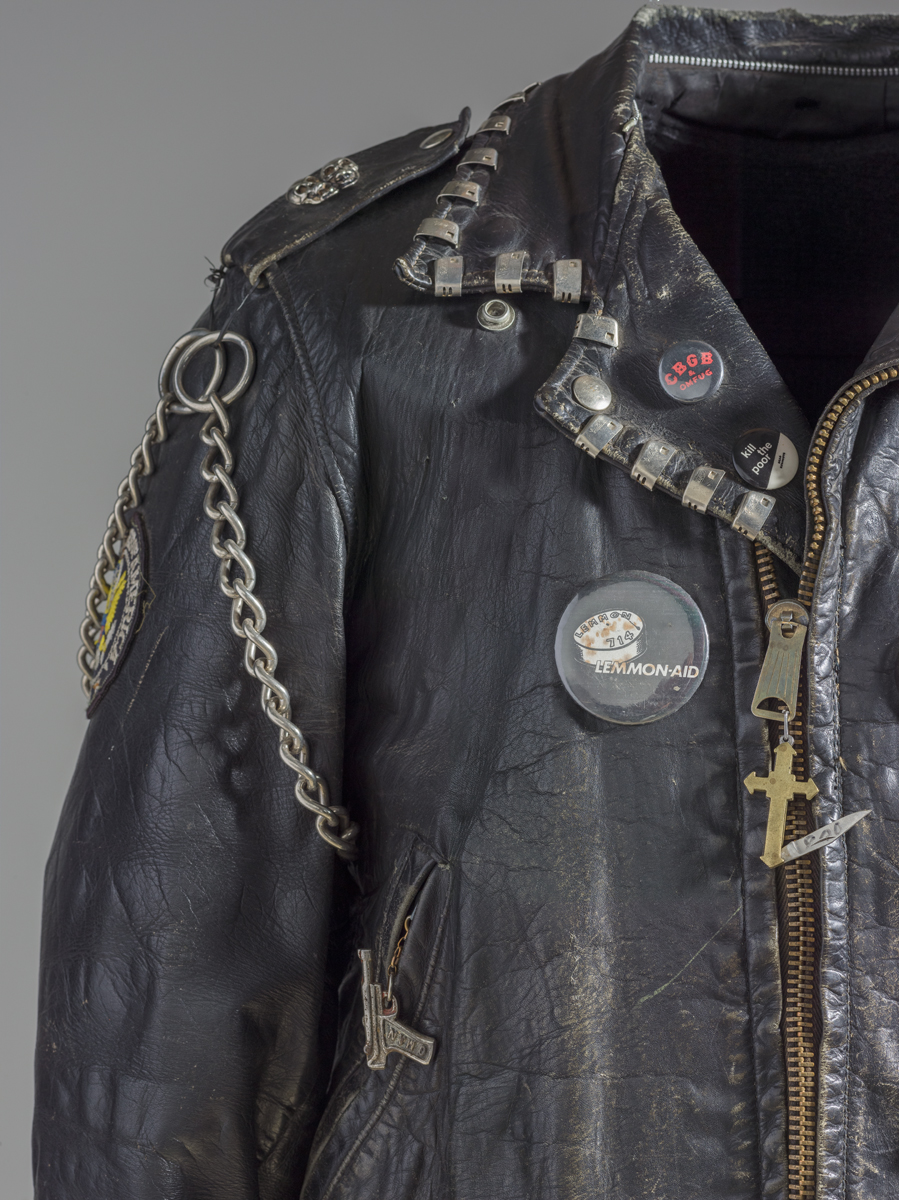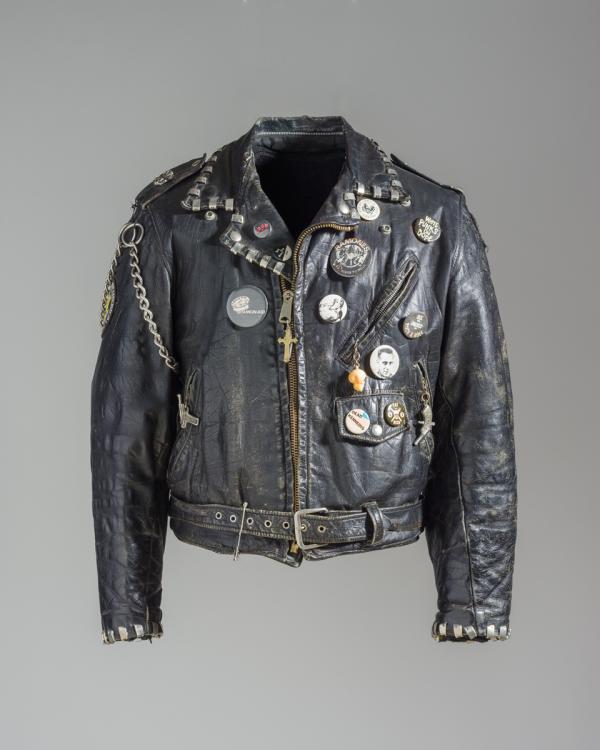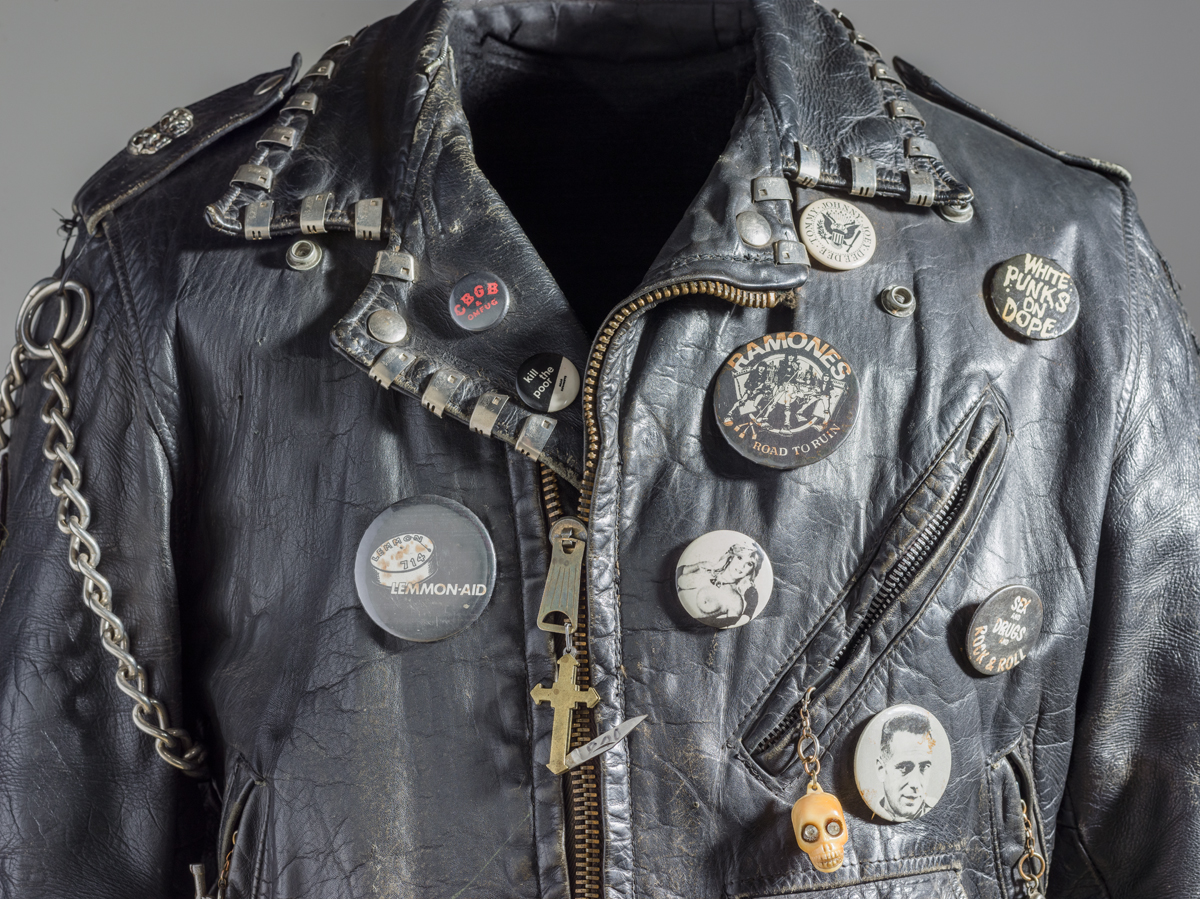The leather biker jacket has been an iconic symbol of rebellion since Marlon Brando first roared into town in The Wild One (1953). Greasers wore it throughout the 1950s–60s before it was adopted by the punk and heavy metal subcultures in the 1970s, with few bands more strongly associated with the black leather jacket than New York's punk pioneers, the Ramones. It's appropriate, then, that the jacket in LACMA's collection—acquired in 2013 and on display for the first time in the upcoming Reigning Men: Fashion in Menswear, 1715–2015—is one that belonged to a Ramones fan from New York.
The jacket would have initially been worn largely unadorned, as was the prevalent style in the '70s, before evolving organically as its owner modified it over the years. Today it exemplifies punk's DIY ethic and assemblage aesthetic while also providing narrative hints about the wearer himself.
The collar and cuffs are decorated with metal caps pulled from disposable cigarette lighters, while zippers are adorned with miniature pistols, a skull, and a crucifix with a folding blade. Two Ramones buttons—the band's logo (a parody of the presidential seal) and the cover of their 1978 Road to Ruin album—are attached next to the collar.
The Ramones logo also takes up the entirety of the jacket's back; it initially appears to be painted directly onto the leather, but in fact it has been cut from a T-shirt and safety-pinned onto the jacket. The patch dates to sometime after 1981, when the band's name was no longer rendered exclusively in a tightly spaced, Gothic-style typeface (as typified on their 1976 debut), and instead was now sometimes rendered in the narrower Helvetica-style font seen here.

The other buttons also provide further texture to the jacket's backstory. One is from CBGB, the legendary music venue in New York's East Village where the Ramones regularly performed. (This one looks like it may be a later addition—it has a slightly more convex surface and a glossier plastic sheen than the others, which are flatter and have the chipped, discolored appearance not uncommon in older buttons.) There are also two buttons from the Dead Kennedys, a San Francisco hardcore band: one bears the song title "Kill the Poor" (1980), while the other bears the band's name, pinned next to a button declaring "Eat the Rich" (an anarchist slogan derived from French philosopher Jean-Jacques Rousseau's quip, "When the people have nothing more to eat, they will eat the rich").

Though presumably unable to dine on the wealthy, the wearer may have ingested an illicit substance or two, as indicated by the "White Punks on Dope" button (a 1975 song by the Tubes). The meaning of the "Lemmon Aid" button requires a little unraveling today, but at the time would have been understood as a reference to Quaaludes, a prescription sedative produced in the late 1970s by the Lemmon Company and popular among recreational users. The badge of the topless woman—a memento of a peep show located near CBGB's back in the day—completes the "Sex, Drugs, and Rock & Roll" trifecta. (And even punks can't resist the timeless cool of certain Hollywood icons, as the Humphrey Bogart button readily attests.) Black leather, knee-hole pants—who needs a high school dance?





